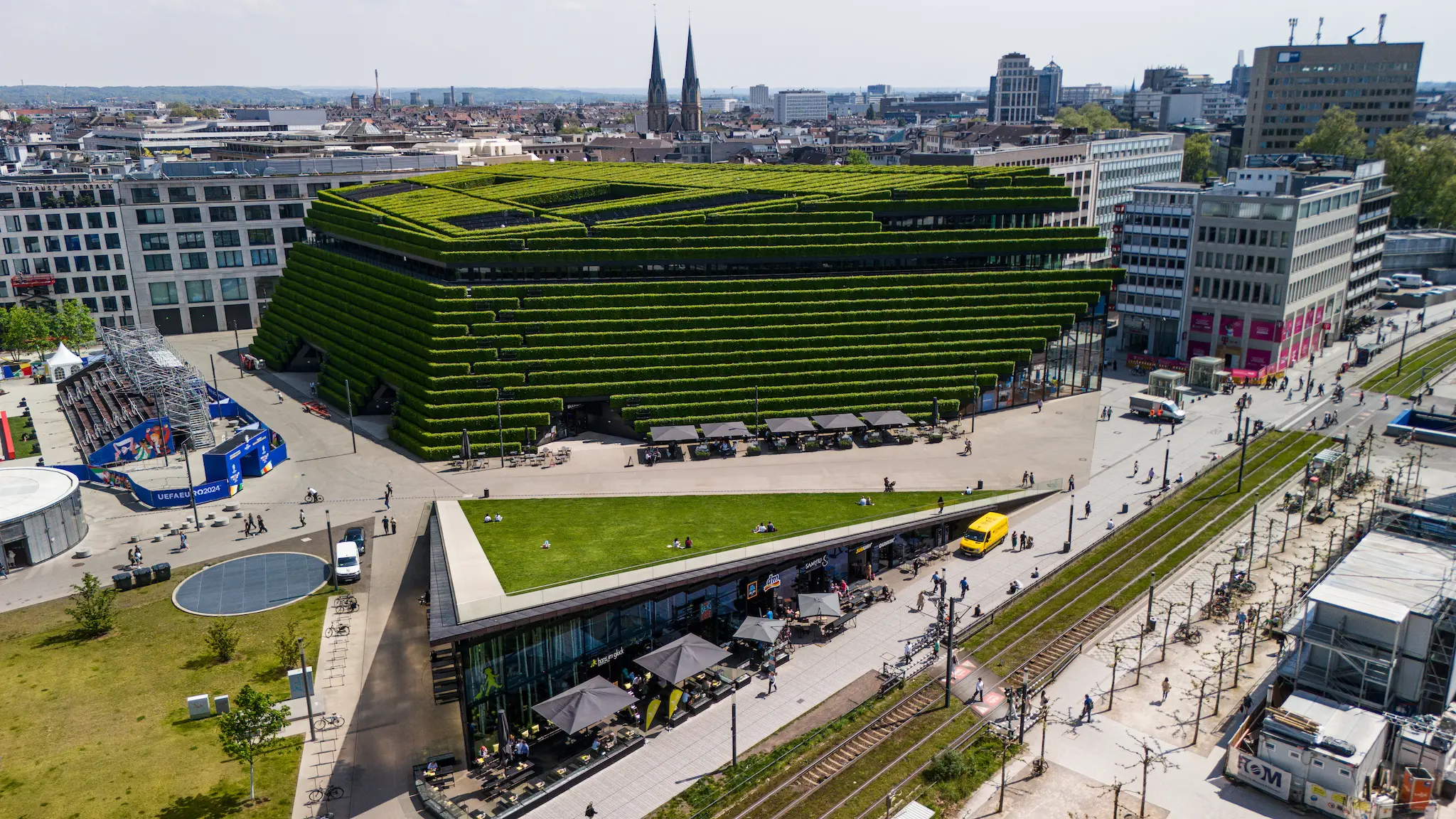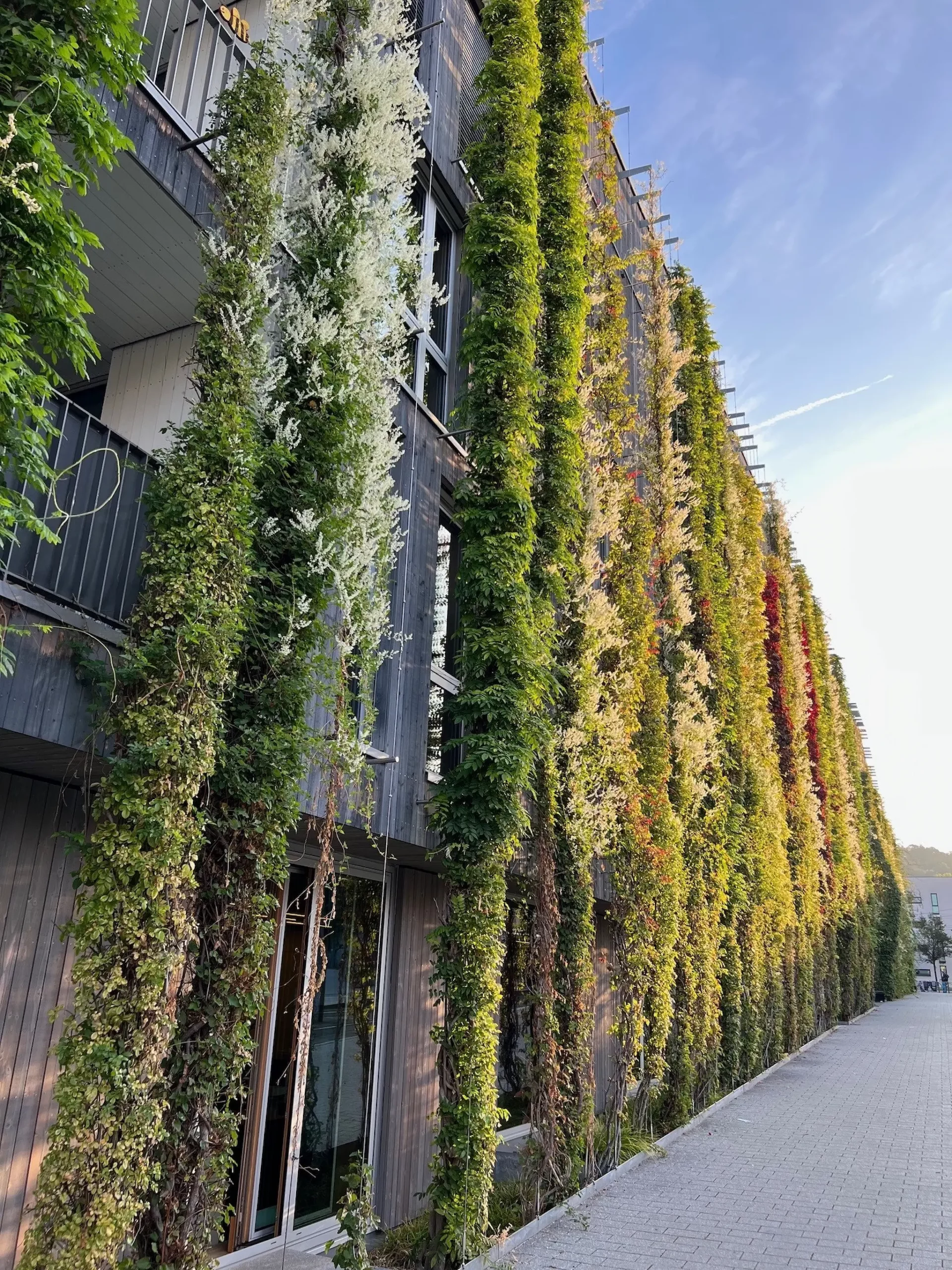Institute for
Urban nature
We are an innovator and guide for
holistic greening concepts based in Freiburg

We are planning urban nature
We are CityArc, the Institute for Urban Nature.
Our conviction: cities need nature. Because people need green. Our vision: making cities more liveable - with more plants on facades, roofs and indoors. Green building needs new thinking - and sustainable concepts.
CityArc creates urban nature that has a long-term effect. Nature is integrated instead of working against it. We consistently look for nature-based solutions, i.e. solutions that are based on nature.
It is not easy. Consistent, systematic greening is complex and needs to be comprehensively thought through. CityArc knows how to do it.
- Expertise & feasibility studies
- Climate-adapted planning
- Specialist planning and consulting
- Certification
Natural systems
The structure of a plant cell network stands for distribution, networking and connection. At the same time, it represents the basic structure of plant architecture. It symbolizes and gives identity to what we do.
We build bridges between natural ecosystems and our habitat - the city
However, our built cities and man-made infrastructures are displacing natural ecosystems. In order to positively connect these with our urban habitat and make the ecosystem services directly usable for us humans, we need not only the motivation for implementation but also the expertise for synergetic realization - that is what we offer.

Why green buildings?
Building greenery enhances facades, buildings and thus the entire image of a city. It creates a sense of well-being. It is lively and aesthetically pleasing. But greenery can do much more. If it is alive - then it fulfills important functions: For buildings, cities, people and biodiversity.
Hot summers, drought, heavy rainfall: the consequences of climate change are becoming increasingly visible, tangible and measurable. We cannot avoid climate change adaptation measures: the warming in cities is intensifying - building by building, street by street. At the same time, biodiversity is declining dramatically.

We network green islands
We counter the loss of nature with networked green systems that are well thought out and precisely coordinated: The greening of buildings can improve the urban climate. Greenery humidifies and cools the air, provides shade and binds particulate matter. Green walls, roofs and other surfaces open up new habitats that are lost elsewhere. Good for fauna, flora and people.
Urban nature
- counteracts urban heat islands through shading and evaporative cooling
- cleans the air of fine dust, produces O2 and absorbs CO2
- reduces the surface temperature on buildings
- provides local recreation areas in urban areas
- reduces road noise
- provides habitats for animals such as insects and birds
- protects building envelopes from the effects of weathering and heat loss - thus increasing the service life of the building fabric

We find natural solutions
Nature offers us solutions to make cities and buildings more liveable: Evaporative cooling, insulation, water storage and shade.
We observe nature and learn from it. With nature-based solutions, we can improve our living and working environment. The history of the earth shows: Nature forms independently functioning ecosystems, which form the basis for our lives.

We build climate-adapted
Our system is running hot: while temperatures are rising worldwide and cities are getting hotter and hotter, more and more people are moving to urban areas.
Lots of steel, concrete and asphalt, hot summers and more frequent heavy rainfall events are the worst possible mix. Ultimately, they present us with the challenge of rethinking the city as an organism - and countering climate change with the right strategies. With pioneering, functional planting on buildings.
The greening of buildings has a demonstrable impact on the urban climate. Façade and roof greening increases air humidity and provides cooling effects on the building and its urban surroundings.


We think in green and blue
We are convinced that our cities need more living structures in order to improve our living and working environments ecologically, functionally and in terms of design. A well thought-out blue-green infrastructure can create vibrant networks - and change urban space in the long term.
However, in order to consistently green cities and exploit the full potential of blue-green infrastructure for urban areas, you need to think in a networked way and take a systemic approach.
- We network green islands
- We find natural solutions
- We build climate-adapted
- We think in green and blue
The sponge city
Water is one of our most valuable resources, so we should start now to use the water available to us sensibly and wisely. One solution is the idea of the sponge city. The greening of buildings can effectively retain rainwater - even during heavy rainfall - and is therefore an important part of the system. Here, water is infiltrated on site, retained or stored for further use instead of being discharged into the sewage system. Evaporative cooling is the most valuable thing that plants give us. We use it to change the urban climate. More greenery on buildings in combination with urban trees and open spaces can lower the temperature in cities. Water retention areas, open city streams and open water areas reinforce this effect. In this way, we not only create selective solutions, but strategically thought-out, green-blue networks and thus approach the natural water balance of healthy ecosystems.

